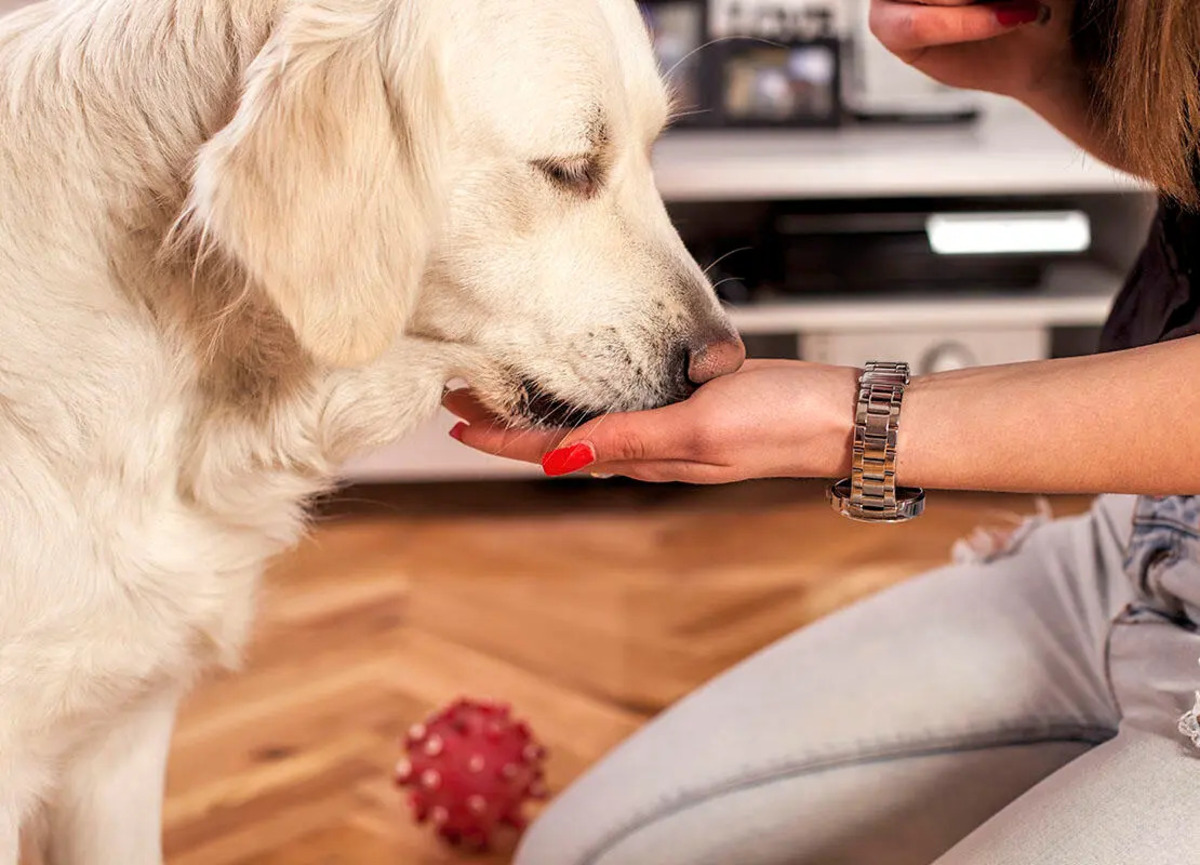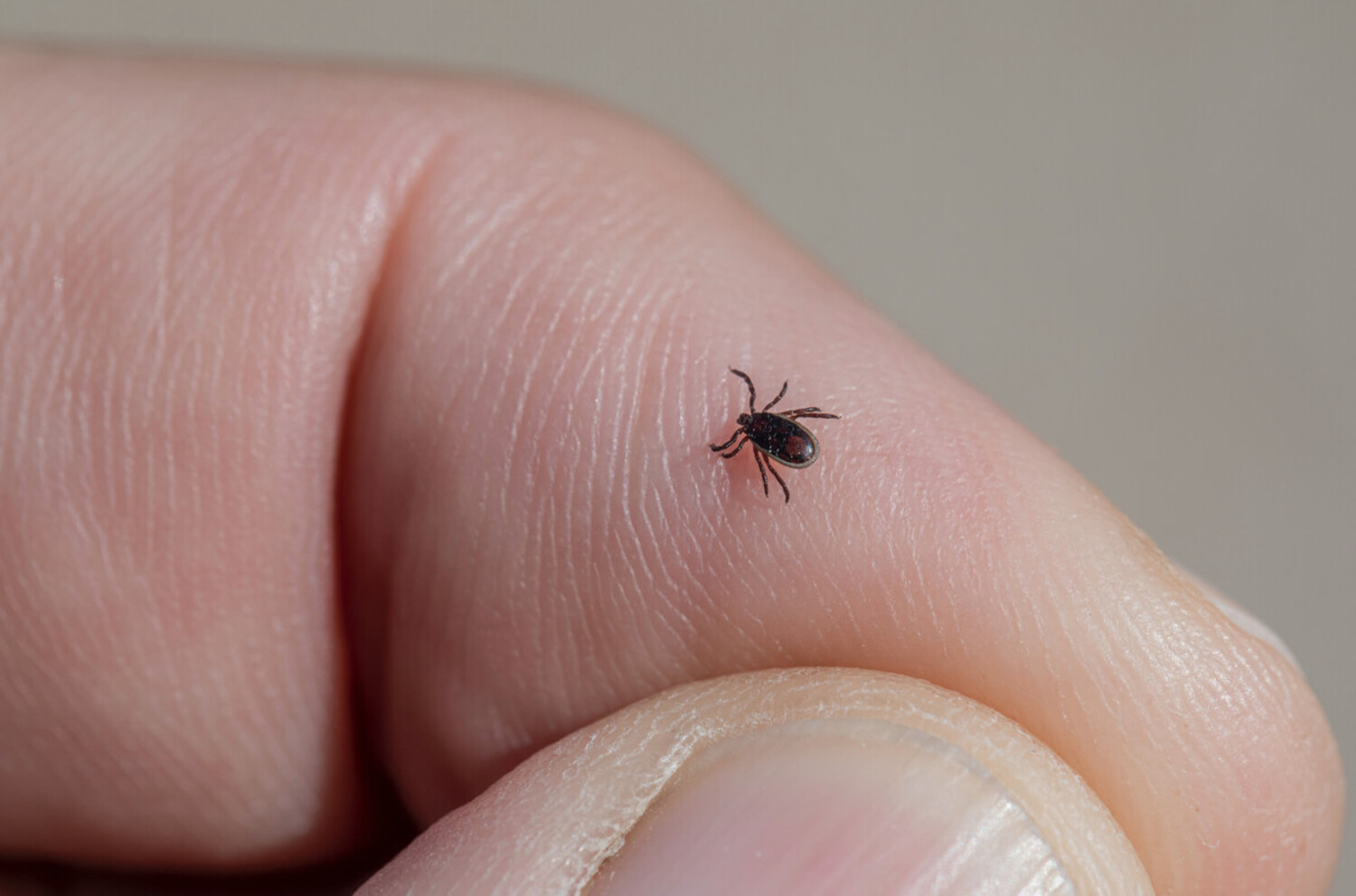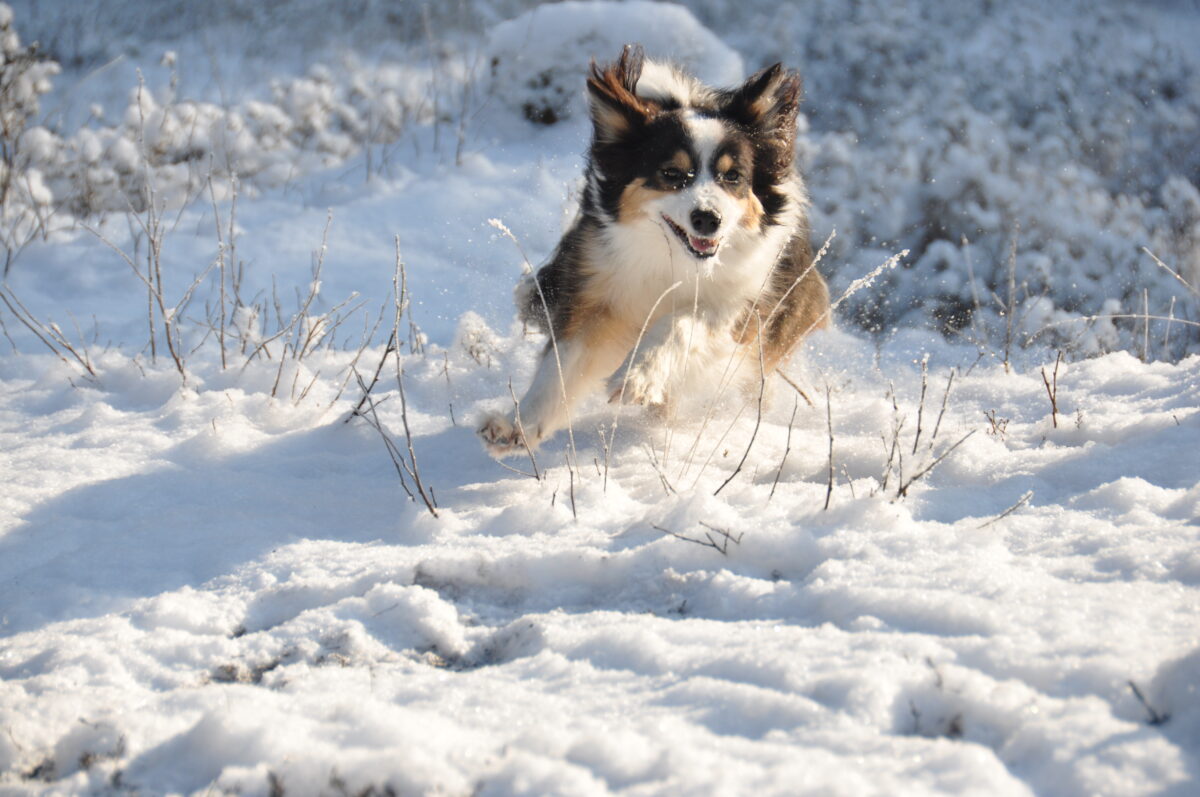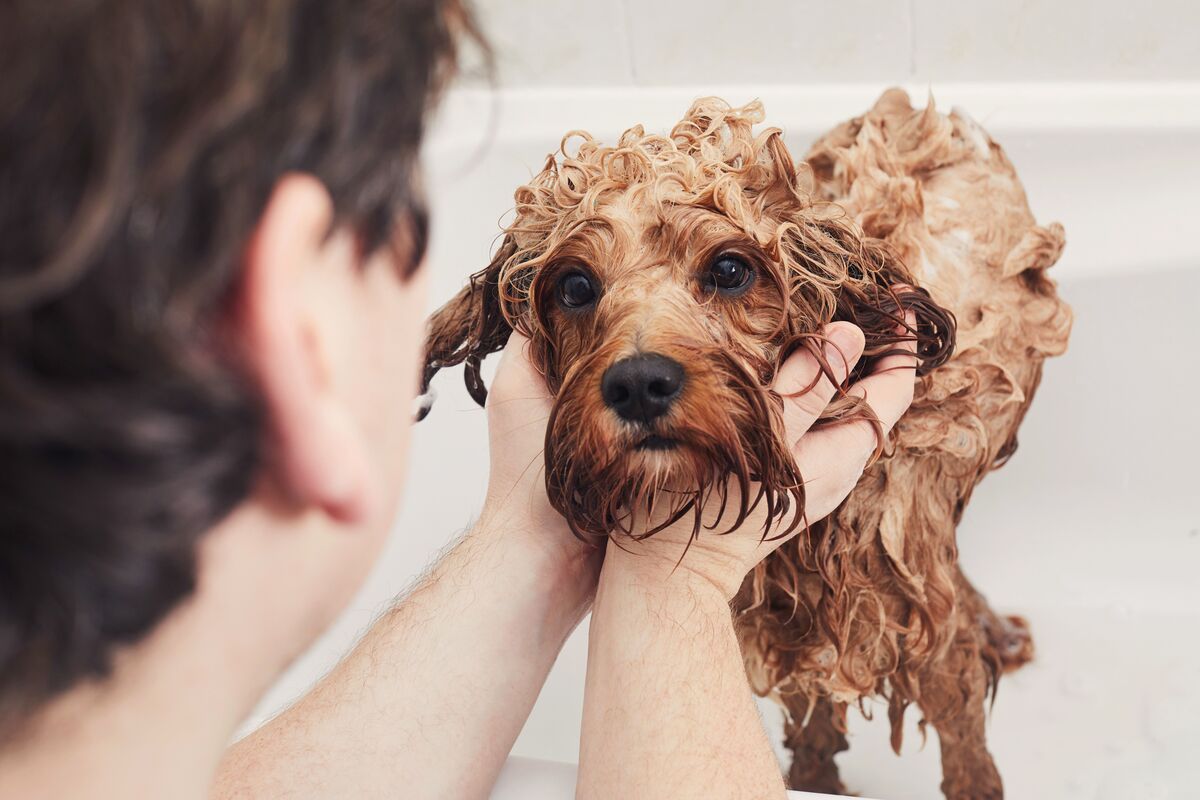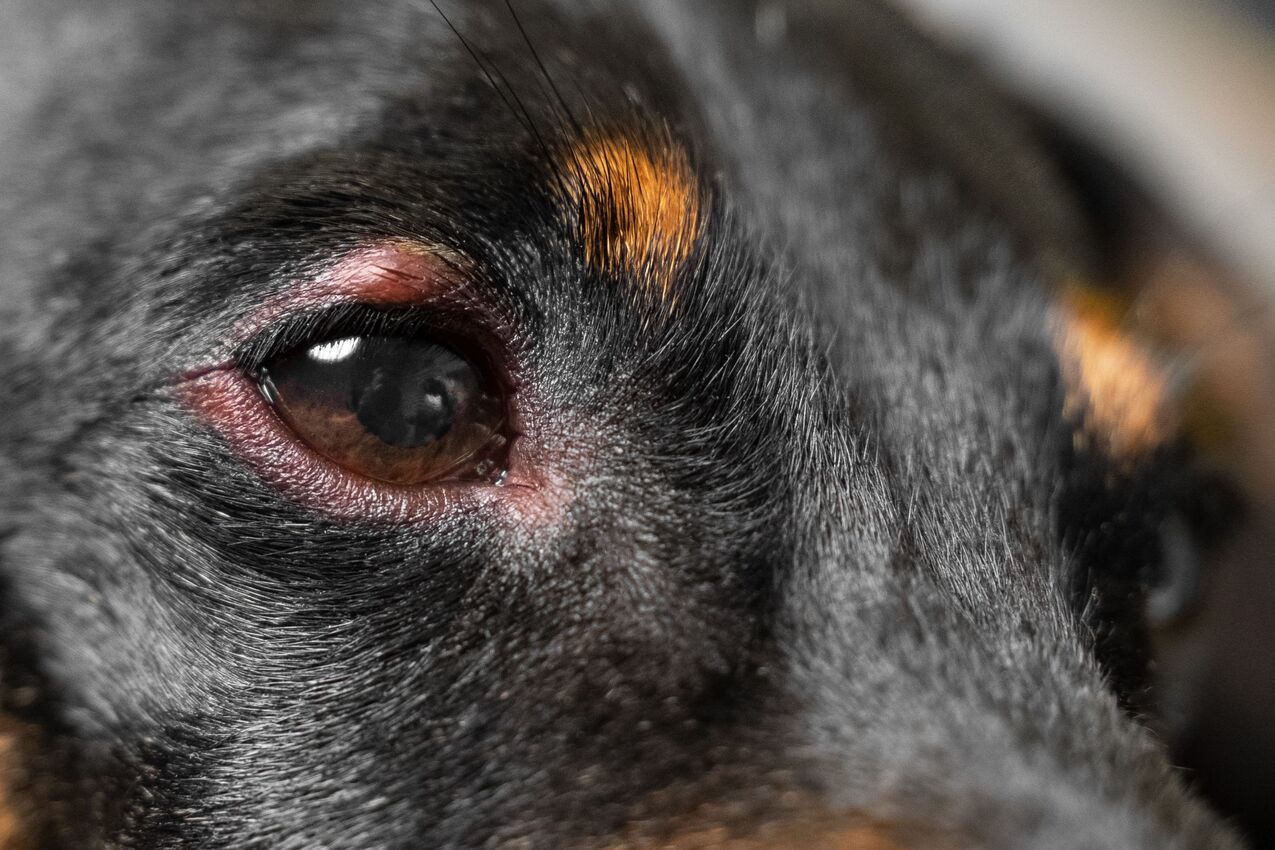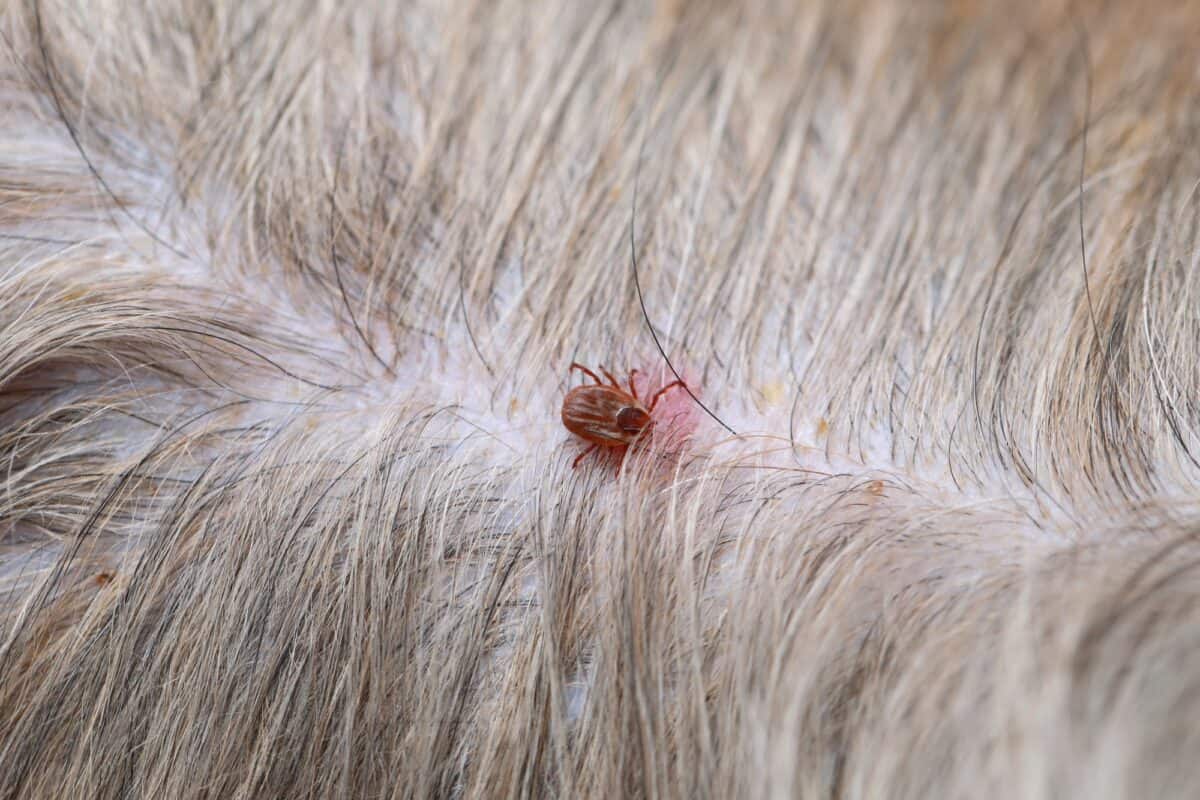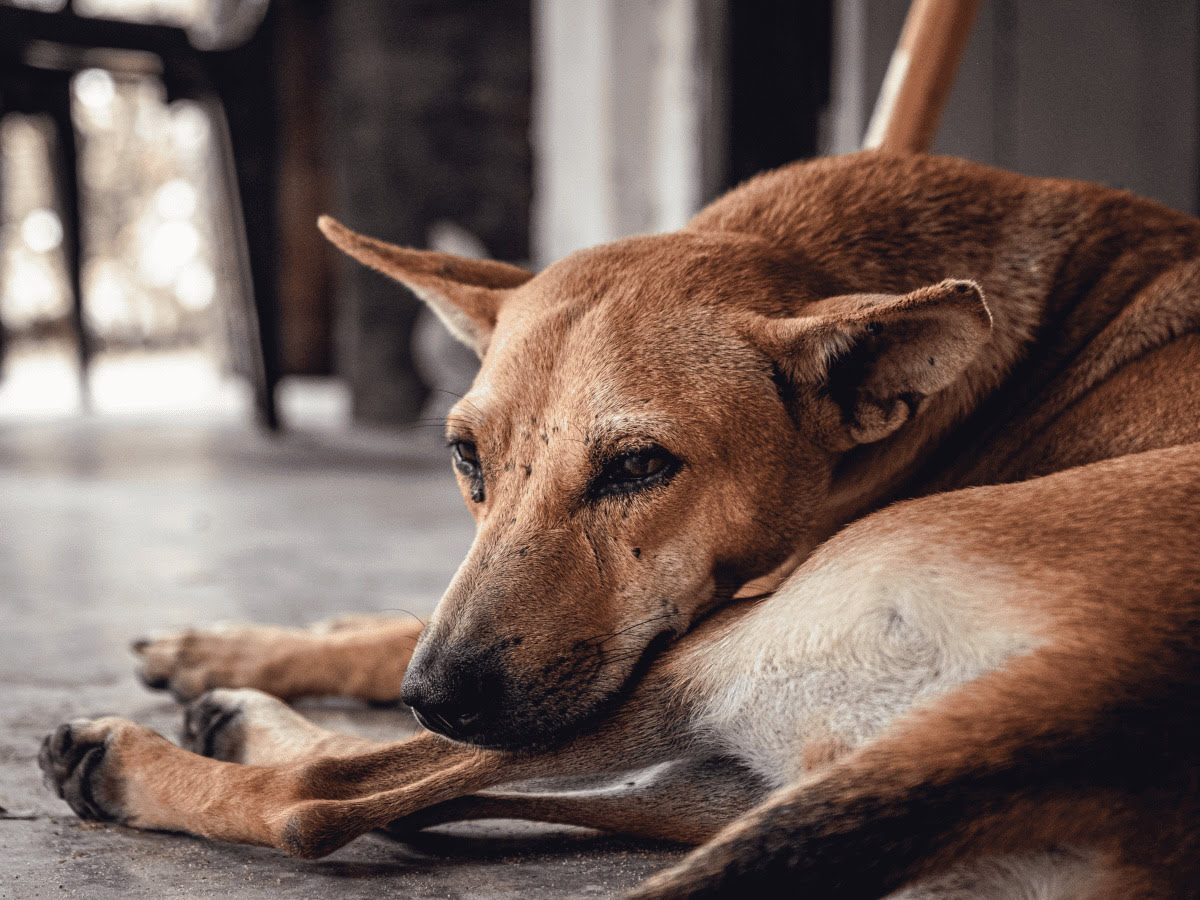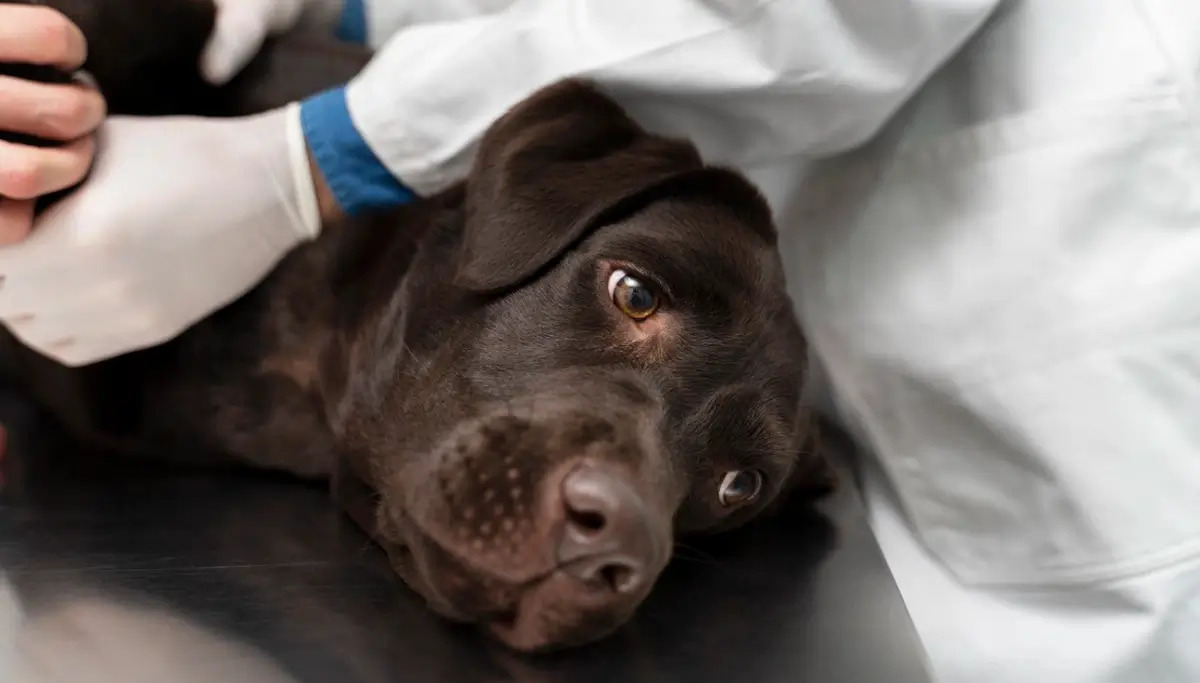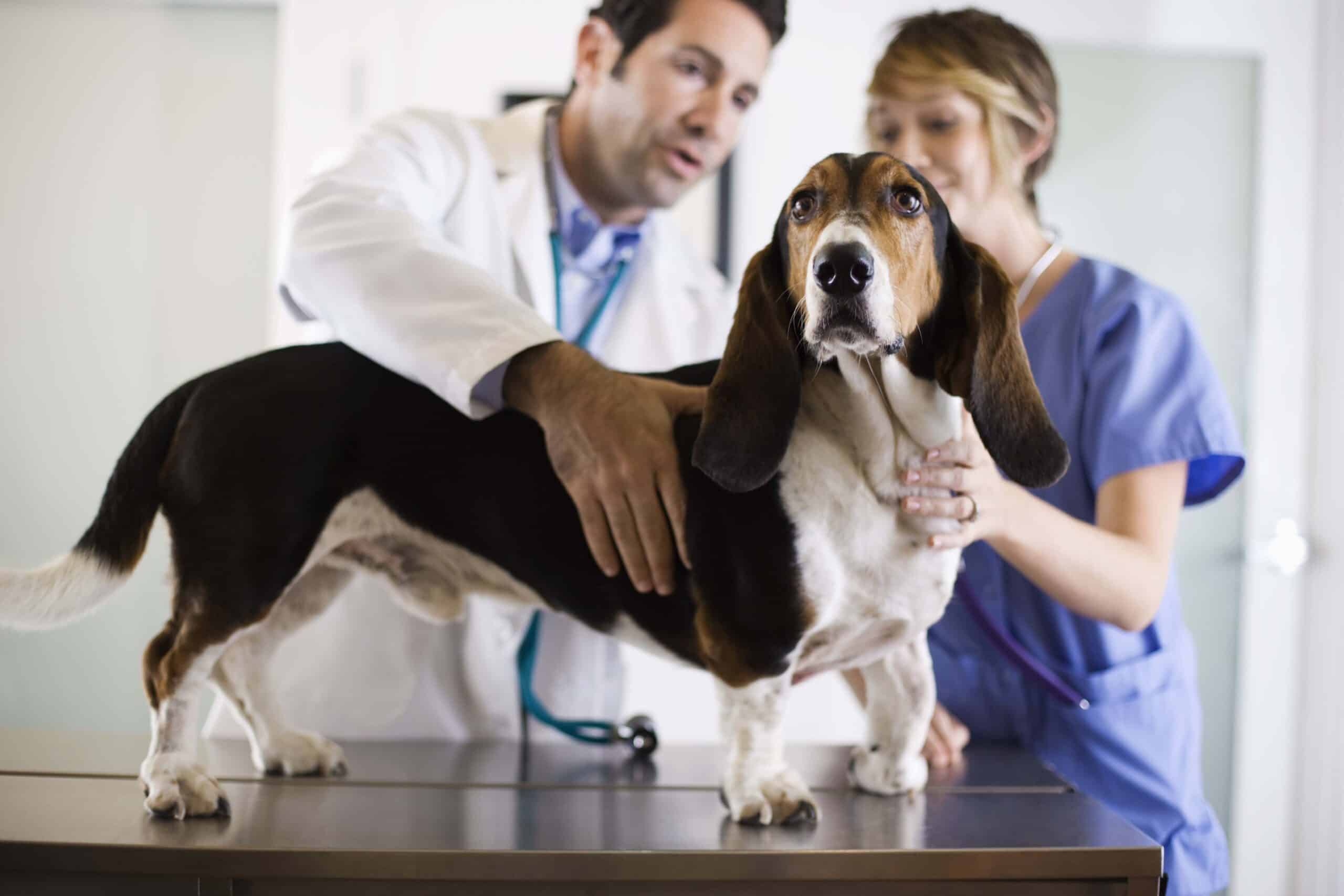Home>Health & Wellness>Common Health Issues>Dog Yelps When Bitten By Fleas


Common Health Issues
Dog Yelps When Bitten By Fleas
Modified: February 21, 2024
Learn about common health issues in dogs, including why your dog yelps when bitten by fleas. Understand the signs and symptoms to keep your furry friend healthy and happy.
(Many of the links in this article redirect to a specific reviewed product. Your purchase of these products through affiliate links helps to generate commission for Pawsomeoldies.com, at no extra cost. Learn more)
Table of Contents
Introduction
Flea bites can be a common source of discomfort for dogs, causing them to yelp and exhibit signs of distress. These tiny, blood-sucking parasites can infest a dog's fur, leading to itchy, irritated skin and potential allergic reactions. Understanding the impact of flea bites on dogs is crucial for pet owners to provide the necessary care and prevent further infestations.
Fleas are notorious for their ability to multiply rapidly and thrive in warm, humid environments, making them a persistent nuisance for dogs, especially during the warmer months. When a dog is bitten by fleas, it can trigger a range of reactions, from mild irritation to severe allergic responses. This can result in the dog yelping, scratching excessively, and displaying signs of discomfort.
In this article, we will delve into the reasons why dogs yelp when bitten by fleas, the signs and symptoms of flea bites, as well as effective treatment and prevention methods. By gaining a deeper understanding of these aspects, pet owners can take proactive measures to safeguard their furry companions from the distress caused by flea infestations.
Read more: When Are Fleas Most Active On Dogs
Understanding Flea Bites on Dogs
Flea bites on dogs can be a source of immense discomfort and irritation. These tiny, wingless insects are adept at hiding within a dog's fur, making it challenging for pet owners to detect and eliminate them. When fleas bite a dog, they inject saliva containing anticoagulants and anesthetics to facilitate blood feeding. This saliva often triggers allergic reactions in dogs, leading to intense itching and skin irritation.
Flea bites typically cause red, raised bumps on a dog's skin, especially in areas with less hair coverage, such as the belly, groin, and armpits. The incessant itching caused by these bites can prompt dogs to scratch, bite, or lick the affected areas, exacerbating the irritation and potentially leading to secondary skin infections.
Moreover, some dogs may develop flea allergy dermatitis (FAD), an allergic reaction to flea saliva. In dogs with FAD, even a single flea bite can trigger a severe allergic response, resulting in intense itching, hair loss, and inflamed skin. This condition can significantly impact a dog's quality of life and overall well-being.
Understanding the impact of flea bites on dogs is crucial for pet owners to recognize the signs of infestation and take prompt action to alleviate their pet's discomfort. Regular grooming and inspection of a dog's coat can aid in early detection of fleas and their bites. Additionally, implementing preventive measures, such as using flea control products recommended by veterinarians, can help mitigate the risk of flea infestations and minimize the likelihood of flea bites on dogs.
By gaining insight into the implications of flea bites on dogs, pet owners can proactively safeguard their furry companions from the distress and discomfort caused by these persistent parasites.
Why Do Dogs Yelps When Bitten By Fleas?
When dogs are bitten by fleas, the resulting discomfort and irritation can prompt them to yelp and exhibit signs of distress. This reaction stems from a combination of physical discomfort and allergic responses triggered by flea saliva.
Flea bites introduce saliva containing anticoagulants and anesthetics into the dog's skin, which serves to facilitate the flea's blood-feeding process. However, this saliva can also evoke allergic reactions in dogs, leading to intense itching and skin irritation. The sensation caused by the flea bites can be particularly aggravating, prompting the dog to vocalize its discomfort through yelping or whining.
Furthermore, the incessant itching and irritation caused by flea bites can prompt dogs to engage in excessive scratching, biting, or licking of the affected areas. This behavior is a natural response to alleviate the discomfort, but it can exacerbate the skin irritation and lead to further distress for the dog. In cases of severe flea infestations or allergic reactions, dogs may exhibit heightened levels of agitation and restlessness, often accompanied by vocal expressions of discomfort.
It's important to note that some dogs may be more sensitive to flea bites than others, with certain breeds or individuals being predisposed to allergic reactions to flea saliva. In such cases, even a single flea bite can trigger a significant allergic response, leading to intense itching, inflamed skin, and potential hair loss. This condition, known as flea allergy dermatitis (FAD), can significantly impact a dog's well-being and quality of life, further contributing to their vocalization of distress.
Understanding why dogs yelp when bitten by fleas underscores the significance of proactive flea prevention and control measures. By addressing flea infestations promptly and implementing preventive strategies, such as regular grooming, use of veterinarian-recommended flea control products, and maintaining a clean living environment, pet owners can mitigate the risk of flea bites and alleviate their dog's discomfort.
In essence, the yelping exhibited by dogs when bitten by fleas is a manifestation of their physical discomfort and allergic reactions, highlighting the need for effective flea control and proactive pet care to ensure their well-being and comfort.
Signs and Symptoms of Flea Bites on Dogs
Flea bites on dogs can manifest in various signs and symptoms, serving as indicators of potential infestations and the resulting discomfort experienced by the affected animals. Understanding these manifestations is crucial for pet owners to promptly address flea-related issues and alleviate their dog's distress.
-
Intense Itching: One of the primary signs of flea bites on dogs is intense itching. When fleas bite, they inject saliva containing allergens, triggering an allergic reaction in many dogs. This leads to persistent itching, causing the dog to scratch, bite, or lick the affected areas excessively.
-
Red, Raised Bumps: Flea bites often result in the formation of red, raised bumps on the dog's skin. These small, inflamed lesions are typically concentrated in areas with less hair coverage, such as the abdomen, groin, and armpits. The presence of these bumps can indicate an active flea infestation and the need for immediate intervention.
-
Hair Loss and Skin Irritation: Prolonged exposure to flea bites can lead to hair loss and skin irritation in dogs. The continuous scratching and biting in response to the itching can cause trauma to the skin, resulting in bald patches, redness, and potential secondary infections.
-
Restlessness and Agitation: Dogs experiencing flea bites may exhibit restlessness and agitation. The discomfort caused by the bites can lead to behavioral changes, including increased pacing, difficulty resting, and heightened levels of distress.
-
Flea Dirt and Flea Allergy Dermatitis: The presence of flea dirt, which resembles dark specks or pepper-like granules on the dog's skin, can indicate an active flea infestation. Additionally, some dogs may develop flea allergy dermatitis (FAD), characterized by severe allergic reactions to flea saliva. Dogs with FAD may display intense itching, inflamed skin, and hair loss, necessitating prompt veterinary attention.
Recognizing these signs and symptoms of flea bites on dogs empowers pet owners to take proactive measures to address flea infestations and alleviate their dog's discomfort. By implementing regular grooming, using veterinarian-recommended flea control products, and maintaining a clean living environment, pet owners can mitigate the impact of flea bites and safeguard their furry companions from the distress caused by these persistent parasites.
Treatment and Prevention of Flea Bites on Dogs
Addressing flea bites on dogs involves a multifaceted approach encompassing treatment, prevention, and proactive measures to alleviate the discomfort caused by flea infestations. By implementing effective strategies, pet owners can safeguard their furry companions from the distress and irritation associated with flea bites.
Read more: Can My Dog Get Fleas When On Trifexis?
Treatment of Flea Bites on Dogs
-
Flea Control Products: Utilizing veterinarian-recommended flea control products, such as topical treatments, oral medications, and flea collars, can aid in eradicating fleas from the dog's environment and preventing further infestations. These products are designed to target fleas at various stages of their life cycle, effectively curbing their population and reducing the likelihood of flea bites.
-
Grooming and Bathing: Regular grooming and bathing of the dog using flea-specific shampoos and dips can help eliminate existing fleas and soothe the dog's irritated skin. Thoroughly combing the dog's fur with a fine-toothed flea comb can aid in removing adult fleas and their eggs, contributing to the overall reduction of flea activity.
-
Environmental Control: Treating the dog's living environment, including bedding, carpets, and outdoor areas, with pet-safe flea control products is essential to prevent reinfestation. Vacuuming frequently and washing the dog's bedding in hot water can help eliminate flea eggs and larvae, reducing the presence of fleas in the surroundings.
-
Veterinary Care: In cases of severe flea infestations or allergic reactions, seeking veterinary care is paramount. Veterinarians can provide tailored treatment plans, including prescription medications to alleviate itching, manage skin inflammation, and address secondary infections resulting from flea bites.
Prevention of Flea Bites on Dogs
-
Regular Preventive Measures: Implementing year-round flea prevention measures is crucial to safeguarding dogs from flea bites. Using veterinarian-recommended flea preventatives, such as spot-on treatments, oral medications, or flea collars, can effectively repel fleas and prevent infestations.
-
Environmental Maintenance: Maintaining a clean living environment by regularly vacuuming, washing the dog's bedding, and keeping outdoor areas tidy can minimize the risk of flea infestations. Additionally, reducing outdoor exposure in areas with high flea prevalence can help lower the likelihood of flea bites.
-
Routine Veterinary Check-ups: Regular veterinary examinations enable early detection of fleas and their bites, allowing for prompt intervention and preventive measures. Veterinarians can recommend suitable flea control products based on the dog's specific needs and environmental factors.
-
Flea Allergy Management: For dogs with flea allergy dermatitis (FAD), implementing stringent flea control measures and seeking veterinary guidance for allergy management is essential. This may involve specialized treatments and preventive strategies tailored to the dog's condition.
By integrating comprehensive treatment and prevention approaches, pet owners can effectively mitigate the impact of flea bites on dogs and ensure their furry companions remain comfortable and free from the distress caused by flea infestations. Consistent vigilance and proactive flea control measures are instrumental in safeguarding the well-being of dogs and maintaining a flea-free environment.
Conclusion
In conclusion, understanding the implications of flea bites on dogs is paramount for pet owners to recognize the signs of infestation, alleviate their dog's discomfort, and prevent future flea-related issues. The distress exhibited by dogs when bitten by fleas, including yelping and intense itching, underscores the significance of proactive flea control measures and prompt intervention to address infestations.
By gaining insight into the reasons behind dogs yelping when bitten by fleas, pet owners can appreciate the physical discomfort and allergic reactions experienced by their furry companions. This understanding emphasizes the need for comprehensive flea prevention and control strategies, encompassing regular grooming, use of veterinarian-recommended flea control products, and environmental maintenance to create a flea-free living environment for dogs.
Recognizing the signs and symptoms of flea bites, such as intense itching, red raised bumps, and restlessness, empowers pet owners to take proactive measures to address infestations and alleviate their dog's distress. Prompt treatment and preventive measures, including the use of flea control products, environmental management, and veterinary care, are instrumental in mitigating the impact of flea bites and safeguarding the well-being of dogs.
Furthermore, the multifaceted approach to treating and preventing flea bites on dogs, encompassing flea control products, grooming, environmental management, and routine veterinary care, serves as a comprehensive strategy to address infestations and minimize the discomfort experienced by dogs. By integrating these approaches, pet owners can create a conducive environment for their furry companions, free from the distress and irritation caused by flea bites.
In essence, proactive flea prevention and control measures are essential for maintaining the comfort and well-being of dogs, mitigating the impact of flea bites, and fostering a harmonious bond between pets and their owners. By prioritizing flea management and implementing preventive strategies, pet owners can ensure that their beloved dogs remain free from the discomfort and distress associated with flea infestations, allowing them to thrive in a safe and flea-free environment.
